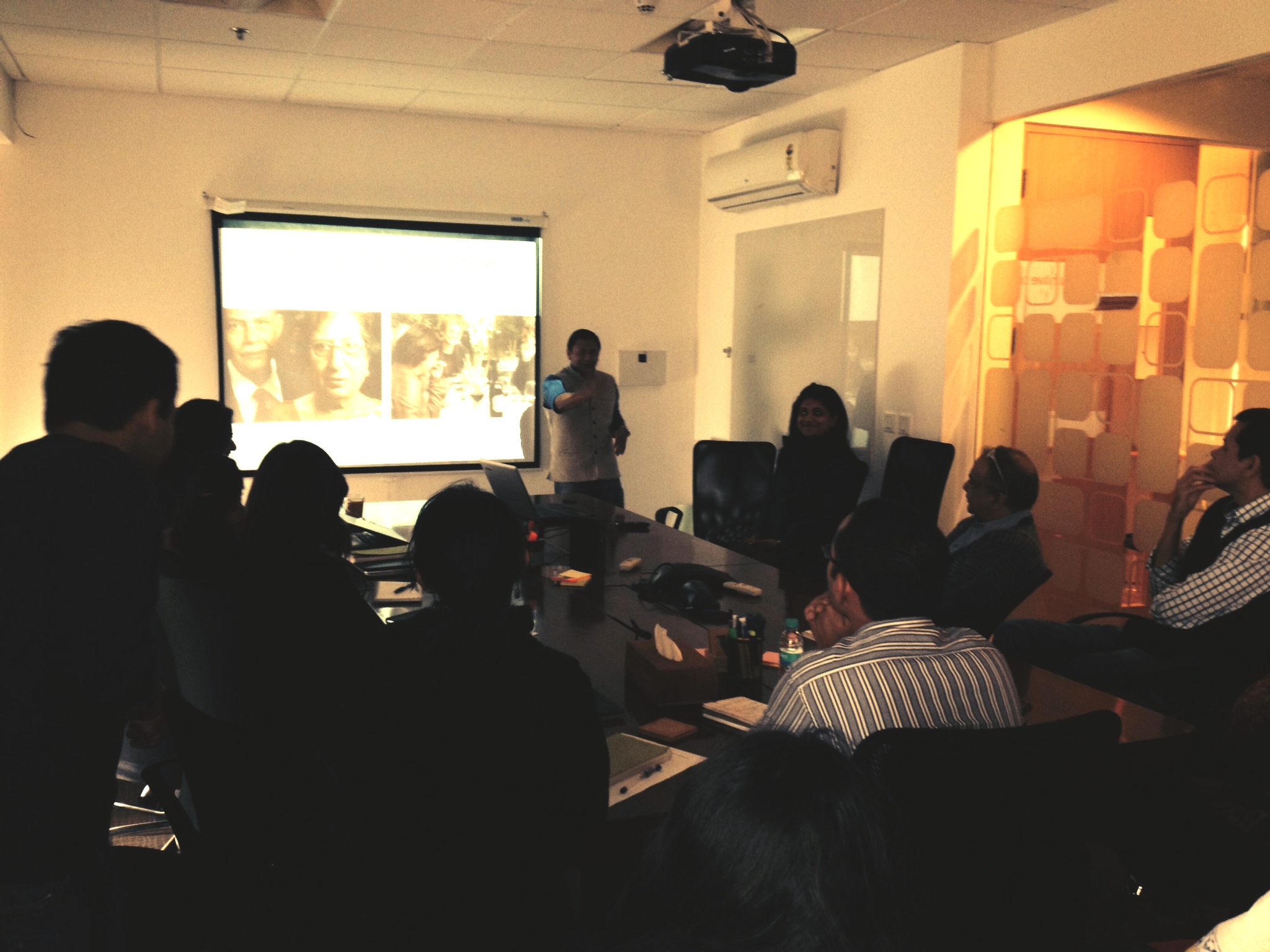The concept of user-generated content has seeped into and transformed traditional information dissemination channels for the rural population. Stepping out of the passive consumption mode, rural community members are now playing an active role in developing and sharing content on improved practices and behaviors within their immediate network. Much like urban folks who are influenced by peers on social networks and add their own ‘Like’ or RT to help a meme or video go viral, farmers tend to be convinced of the benefits of a practice when a fellow farmer promotes it – convinced enough to adopt the practice and help spread the word within their own groups.
This insight combined with a scientific rigour of producing the right type of content and disseminating it in an effective and efficient manner can trigger behavioral change among rural communities. In an article he co-authored for the latest MIT Press Journal special issue on Innovations, Rikin Gandhi, CEO, Digital Green, states, although they (the farmers) may not have access to the Internet or bandwidth or even electricity, these individuals learn by observing their neighbors fields, by asking others about the crops they grow and how they grow them, or inquiring about neighbors health issues and how they treat them.
Digital Green builds on the informal social networks of these farmers to share highly localized content on best practices, using cost-effective technology to help plug the social and geographical distance between farmers, in the process creating community knowledge workers who lead their communities to a self-reliant and sustainable future.
“Community facilitators and forums that nurture peer-to-peer sharing, such as women’s self-help groups, engender a level of trust and understanding by flipping the traditional top-down process of content production and delivery.”
Any approach that aspires to be truly inclusive cannot afford to look through women farmers or the marginalized communities. ‘At Digital Green, we believe that one reason for our success is that we reach out to women and other marginalized farmers; in fact, women account for 79 percent of the people participating in Digital Green screenings. In keeping with our strategy of leveraging homophily to increase the effectiveness of our approach, most of our facilitators and the farmers featured in the videos are female. Digital Green also is active in many communities with predominantly tribal populations, particularly in the Indian states of Jharkhand and Odisha. By bringing these populations together and featuring their peers as role models in the community, we help to bolster their local social standing.”
Feedback from the community on the videos and the screenings is captured and analyzed on a near real-time basis via a stack of tools customized for low-resource settings. This data is essential to make course corrections to the intervention for optimal impact.
Read on to know more about this simple yet ‘disruptive’ approach to information dissemination, one that actually listens to and gives voice to the small farmers, the folks who hold the key to the world’s food security.






















